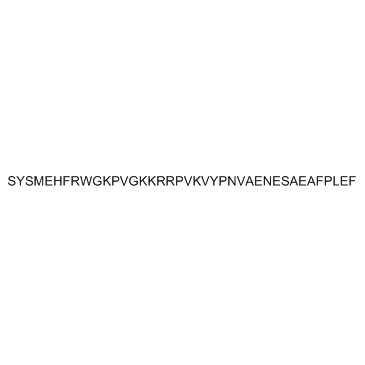Peptides
Products for Peptides
- Cat.No. Product Name Information
-
GC68226
2-Oxo-2-phenylethyl ((benzyloxy)carbonyl)-L-alaninate
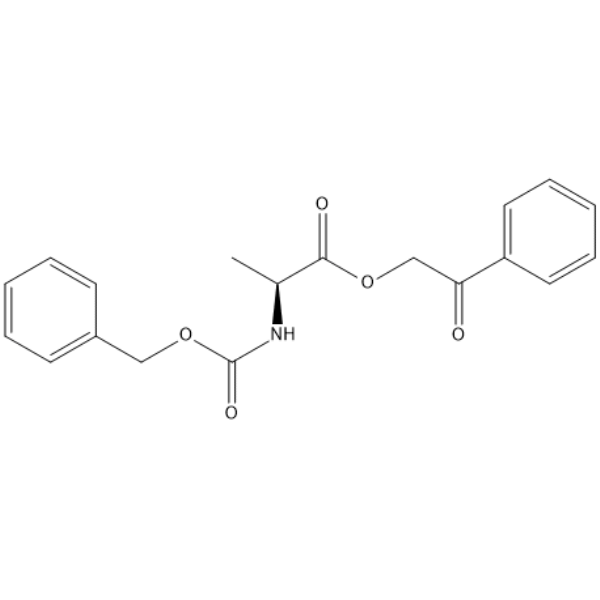
-
GC35085
26Rfa, Hypothalamic Peptide, human
26Rfa, Hypothalamic Peptide, human is a hypothalamic neuropeptide of the RFamide peptide family with orexigenic activity.
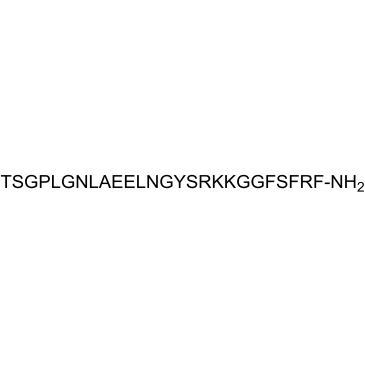
-
GC31249
2: PN: US20040072744 SEQID: 2 claimed protein
2: PN: US20040072744 SEQID: 2 claimed protein is a synthetic peptide, used for the research of Down's syndrome and schizophrenia.
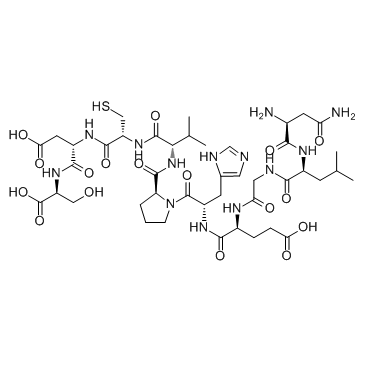
-
GC66737
3,4-Difluoro-L-phenylalanine
3,4-Difluoro-L-phenylalanine is a phenylalanine derivative.
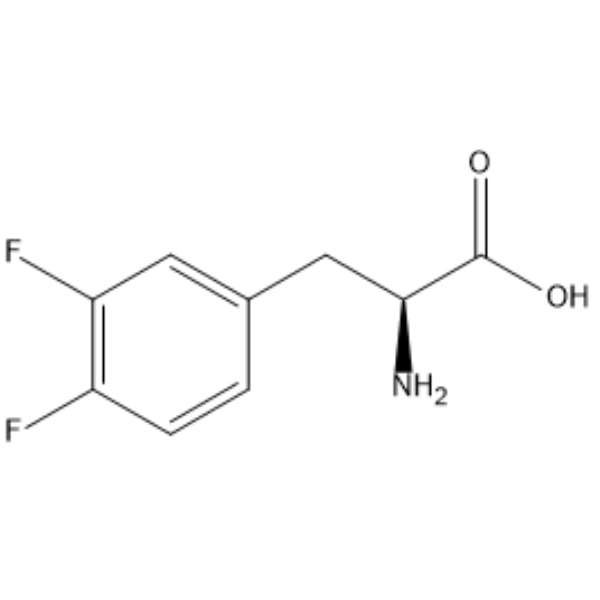
-
GC65407
3,4-Difluorophenylalanine
3,4-Difluorophenylalanine is a fluorinated peptide with gelation ability.
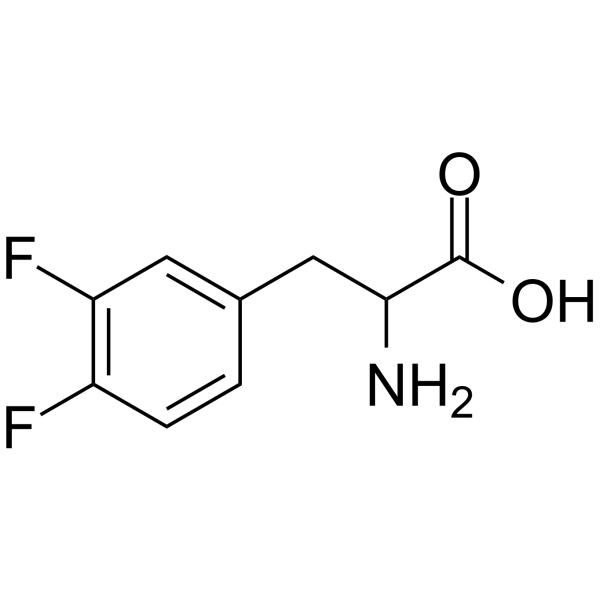
-
GC66208
3,5-Dibromo-D-tyrosine
3,5-Dibromo-D-tyrosine is a tyrosine derivative.
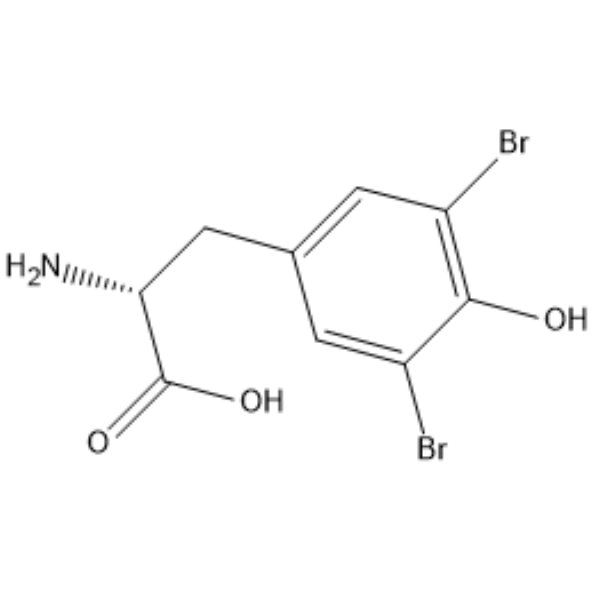
-
GC65221
3,5-Difluoro-DL-phenylalanine
3,5-Difluoro-DL-phenylalanine is a phenylalanine derivative that can be used for amino acids synthesis.
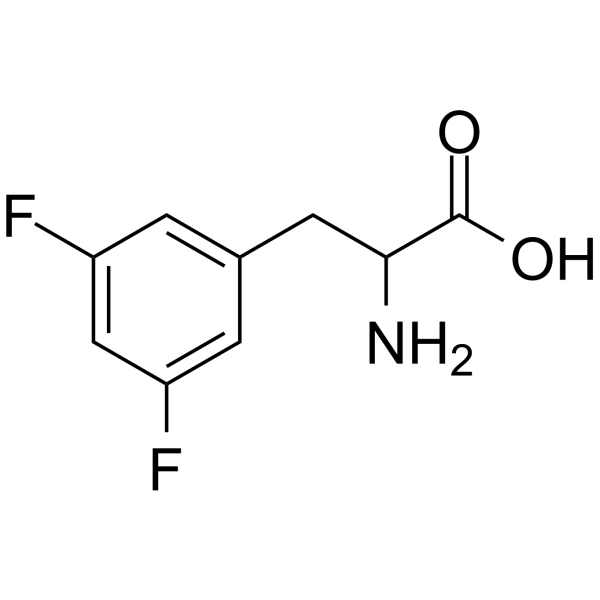
-
GC68247
3,5-Diiodo-D-tyrosine

-
GC66715
3,5-Dinitro-L-tyrosine sodium
3,5-Dinitro-L-tyrosine sodium is a tyrosine derivative. 3,5-Dinitro-L-tyrosine sodium as artificial substrate, has zero activity relative to tyrosine as a substrate for tyrosine aminotransferase.
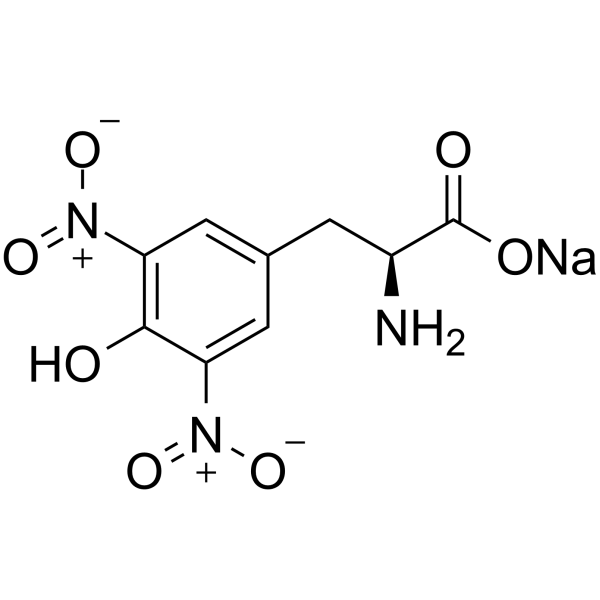
-
GC68094
3-((((9H-Fluoren-9-yl)methoxy)carbonyl)(methyl)amino)propanoic acid
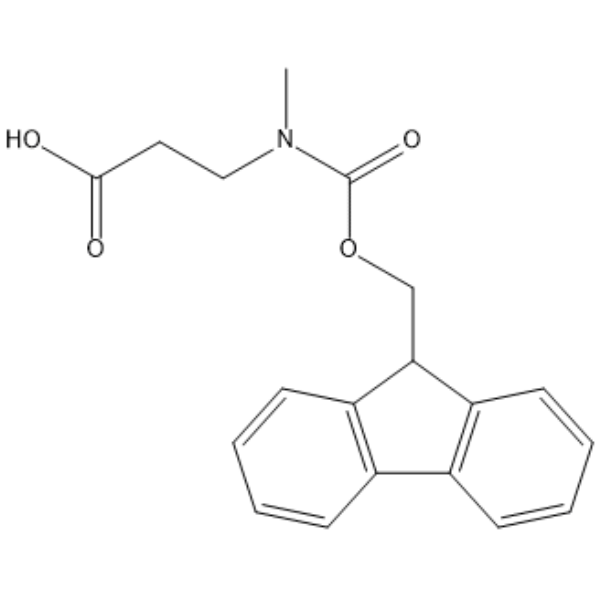
-
GC67810
3-?Bromo-?L-?tyrosine
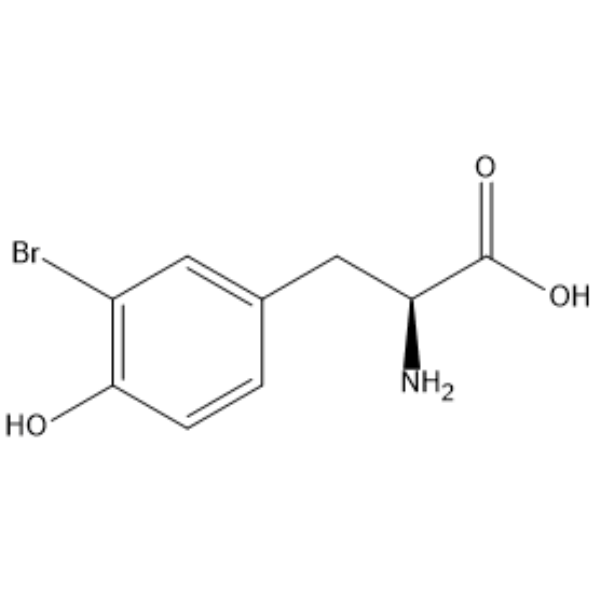
-
GC67809
3-Bromo-DL-phenylalanine
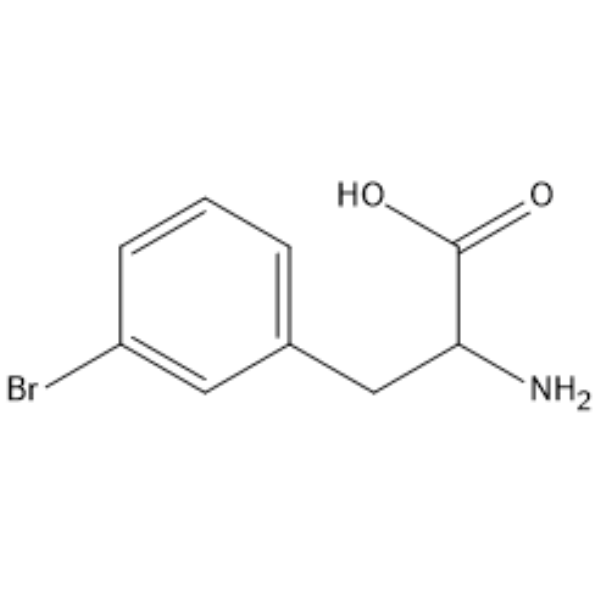
-
GC66716
3-Ethylnorvaline
3-Ethylnorvaline (3-Ethyl-DL-norvaline) is a derivative of Norvaline, can be used to the synthesis of drugs or other compounds.
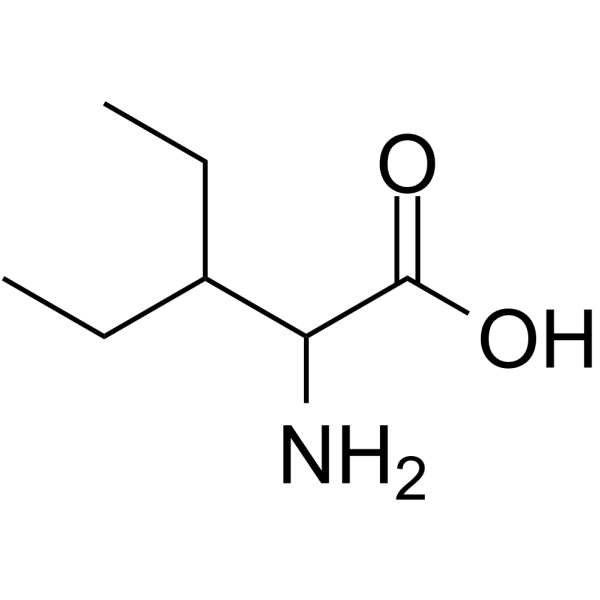
-
GA24059
3X DYKDDDDK Peptide

-
GC68392
3x DYKDDDDK Tag TFA
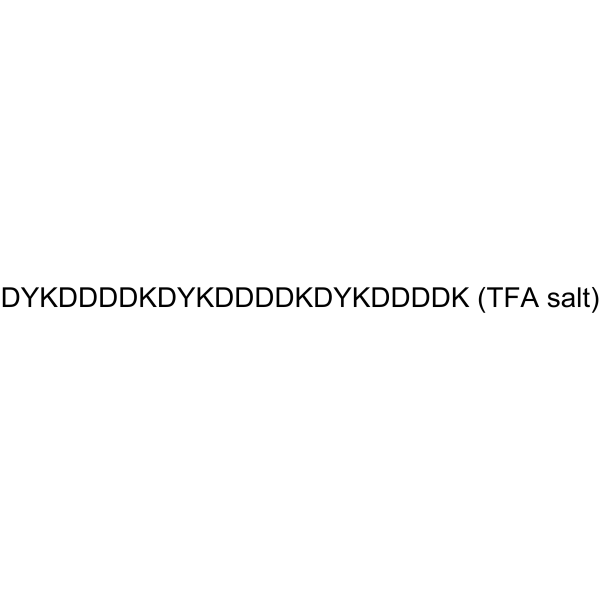
-
GP10149
3X FLAG Peptide
3X FLAG Peptide is a synthetic polypeptide containing three repeated DYKXXD amino acid sequences, often used to competitively bind Anti-Flag antibodies.
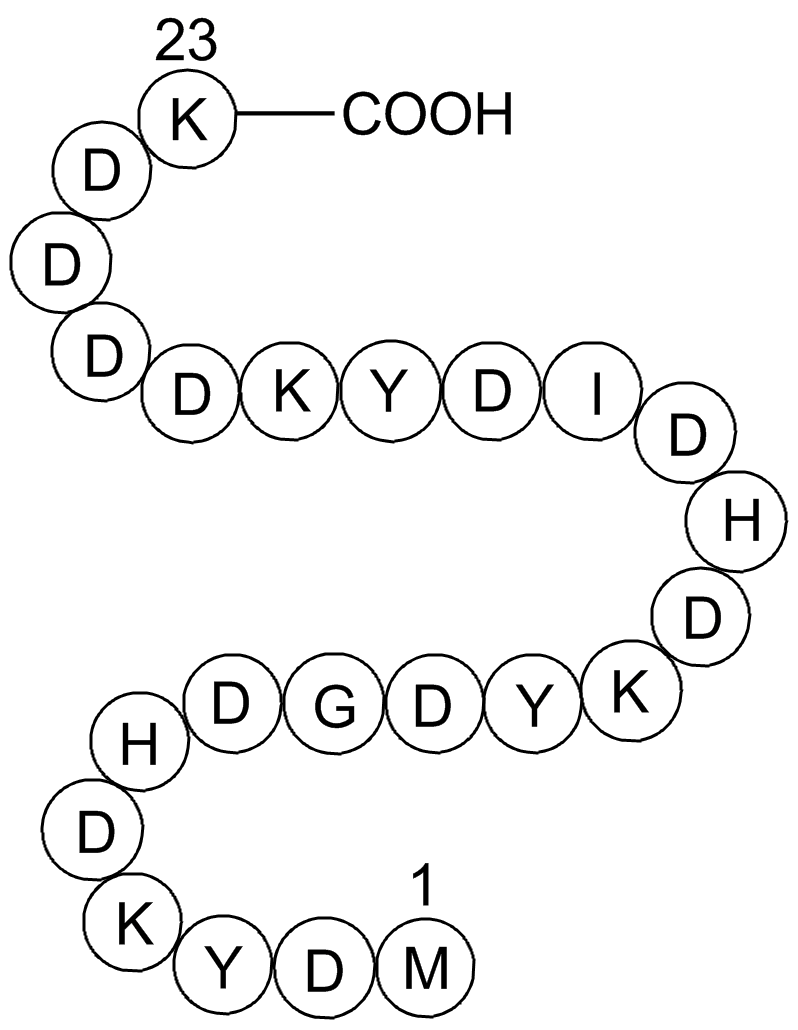
-
GC35123
3X FLAG peptide TFA
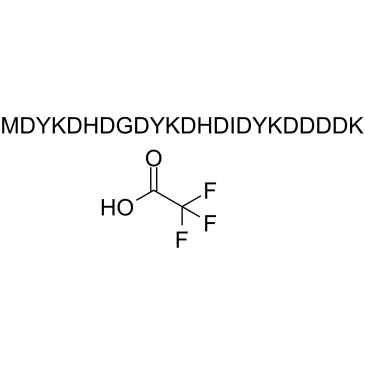
-
GC68071
4-(Trifluoromethyl)-L-phenylalanine
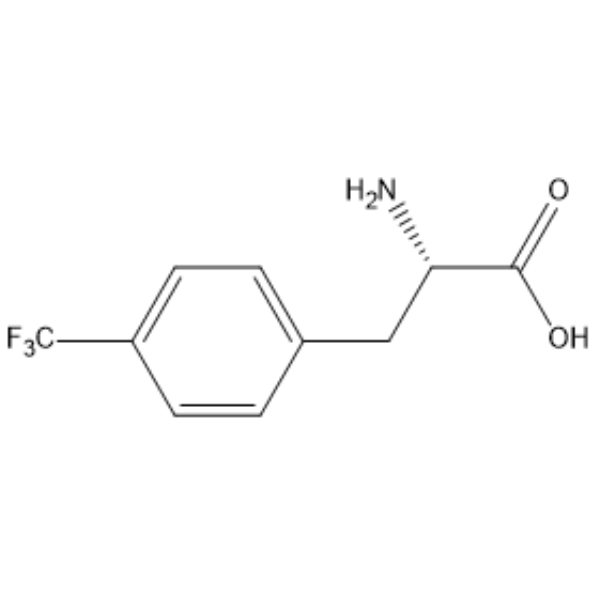
-
GC67210
4-Fluoro-L-Phenylalanine hydrochloride
4-Fluoro-L-Phenylalanine hydrochloride is a derivative of phenylalanine, can be used for the synthesis of drugs or other compounds.
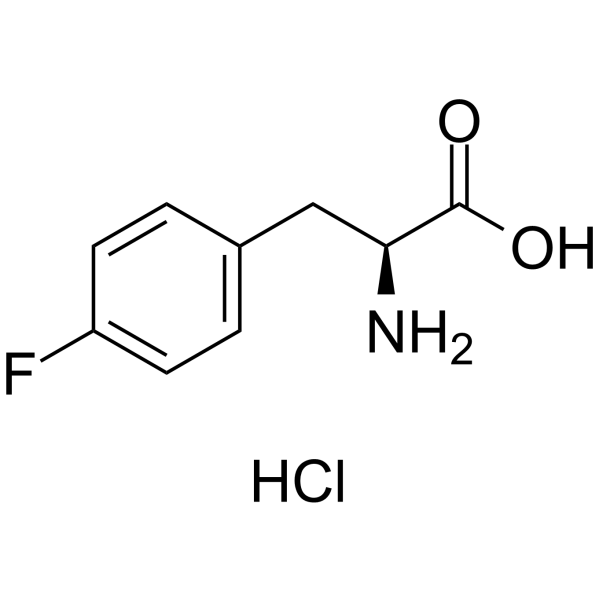
-
GC65535
5-Bromo-L-tryptophan
5-Bromo-L-tryptophan is an α-amino acid derivative that can be found in Semenospongia sp.
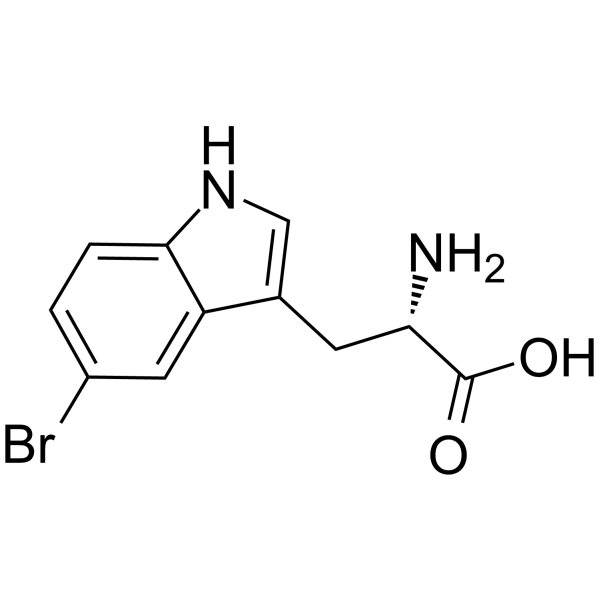
-
GA20433
5-FAM-Amyloid β-Protein (1-40)
5-FAM-Amyloid β-Protein (1-40) is a FAM fluorescently-labelledβ-Amyloid (1-40) peptide (Λex=492nm and Λem=518nm).

-
GA24060
5-FAM-Amyloid β-Protein (1-40)-Lys(εAhx-biotinyl) amide
Fluorescently labeled Aβ40, which may be immobilized.

-
GA20435
5-FAM-Amyloid β-Protein (1-42)

-
GA20434
5-FAM-Amyloid β-Protein (1-42) (scrambled)
Fluorescent dye-labeled inactive control for H-1368, H-6466, H-8146.

-
GC42505
5-FAM-Amyloid-β (1-28) Peptide (human) (trifluoroacetate salt)
5-FAM-Amyloid-β (1-28) peptide is a fluorescently labeled peptide.

-
GC40130
5-FAM-Amyloid-β (1-42) Peptide (human) (trifluoroacetate salt)
5-FAM-Amyloid-β (1-42) peptide is a fluorescently labeled amyloid-β peptide.

-
GA20440
5-TAMRA-Amyloid β-Protein (1-40)
Anderson and Webb could verify using transmission electron microscopy that N-terminal labeling of Aβ40 with TAMRA and other fluorescent dyes does not prevent the formation of protofibrils and amyloid fibrils of various widths.

-
GA20441
5-TAMRA-Amyloid β-Protein (1-42)

-
GC34276
5-Tamra-DRVYIHP
5-Tamra-DRVYIHP i a Peptide with TAMRA labeling oligonucleotide.
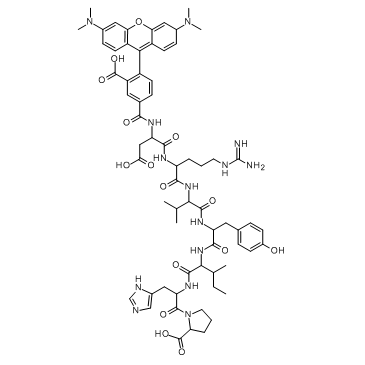
-
GC65217
6-Chloro-L-tryptophan
6-Chloro-L-tryptophan is a Tryptophan derivative.
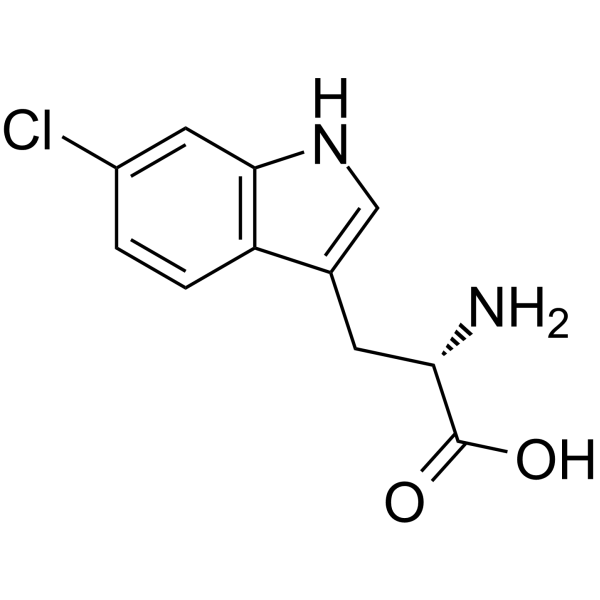
-
GC66663
7-Methyl-DL-tryptophan
7-Methyl-DL-tryptophan (7-Methyltryptophan) is an amino acid derivative, which is a key precursor for biosynthesis of many non-ribosomal peptide antibiotics. 7-Methyl-DL-tryptophan plays an important role in synthesis of high-efficiency antibacterial agents and analogues thereof.
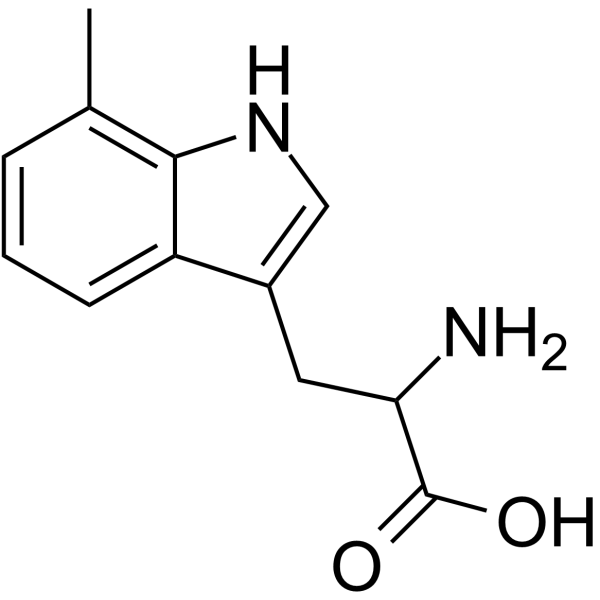
-
GC46768
Abaloparatide (acetate)
A synthetic derivative of PTHrP and an agonist of PTHR1

-
GC38581
Abaloparatide TFA
Abaloparatide TFA (BA 058 TFA) is a parathyroid hormone receptor 1 (PTHR1) analogue selected to be a potent and selective activator of the PTHR1 signaling pathway.
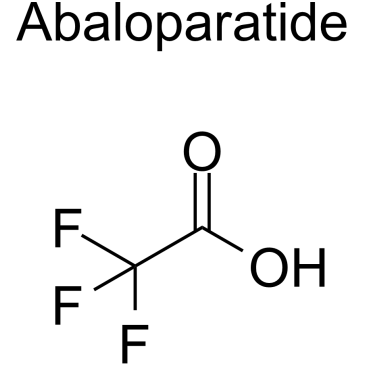
-
GC35220
Abl Cytosolic Substrate
Abl Cytosolic Substrate is a substrate for Abelson tyrosine kinase (Abl ). Abl Protein Tyrosine Kinase (AbI) is a truncated form of the v-AbI Protein Tyrosine Kinase, a partner in the Gag-Abl fusion protein of the Abelson murine leukemia virus.

-
GA20448
Abz-(Asn⁶⁷⁰,Leu⁶⁷¹)-Amyloid β/A4 Protein Precursor₇₇₀ (669-674)-EDDnp
Intramolecularly quenched fluorescent substrate containing the ortho-aminobenzoyl (Abz) / N-(2,4-dinitrophenyl)ethylenediamine (EDDnp) groups as the donor / acceptor pair. It corresponds to the Swedish-mutated (JMV2236) β-amyloid precursor protein (βAPP) sequence targeted by β-secretase BACE (β-site APP-cleaving activity). This FRET substrate is more selectively cleaved by BACE1 and BACE2 than by cathepsin D, a disintegrin and metalloprotease 10 (ADAM10), tumor necrosis α-converting enzyme (TACE), presenilin-1 (PS1), or presenilin-2 (PS2).

-
GA20452
Abz-Amyloid β/A4 Protein Precursor₇₇₀ (669-674)-EDDnp
Intramolecularly quenched fluorescent substrate containing the ortho-aminobenzoyl (Abz) / N-(2,4-dinitrophenyl)ethylenediamine (EDDnp) groups as the donor / acceptor pair. It mimicks the wild-type (JMV2235) β-amyloid precursor protein (βAPP) sequence targeted by β-secretase BACE (β-site APP-cleaving activity). This FRET substrate is cleaved by BACE1, BACE2, and cathepsin D.

-
GA20453
Abz-Amyloid β/A4 Protein Precursor₇₇₀ (708-715)-Lys(Dnp)-D-Arg-D-Arg-D-Arg amide
A sensitive fluorogenic (FRET) substrate developed for the analysis of γ-secretase from post mortem non-Alzheimer's and Alzheimer's disease human brain isolates.

-
GC35223
Abz-FR-K(Dnp)-P-OH
Abz-FR-K(Dnp)-P-OH is an angiotensin I-converting enzyme (ACE) substrate and an internally quenched fluorogenic substrate for real time fluorescent assay.
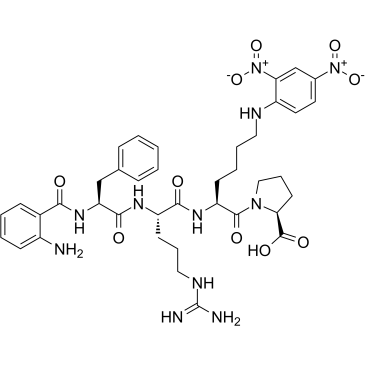
-
GC10097
AC 187
Amylin receptor antagonist, Potent and selective
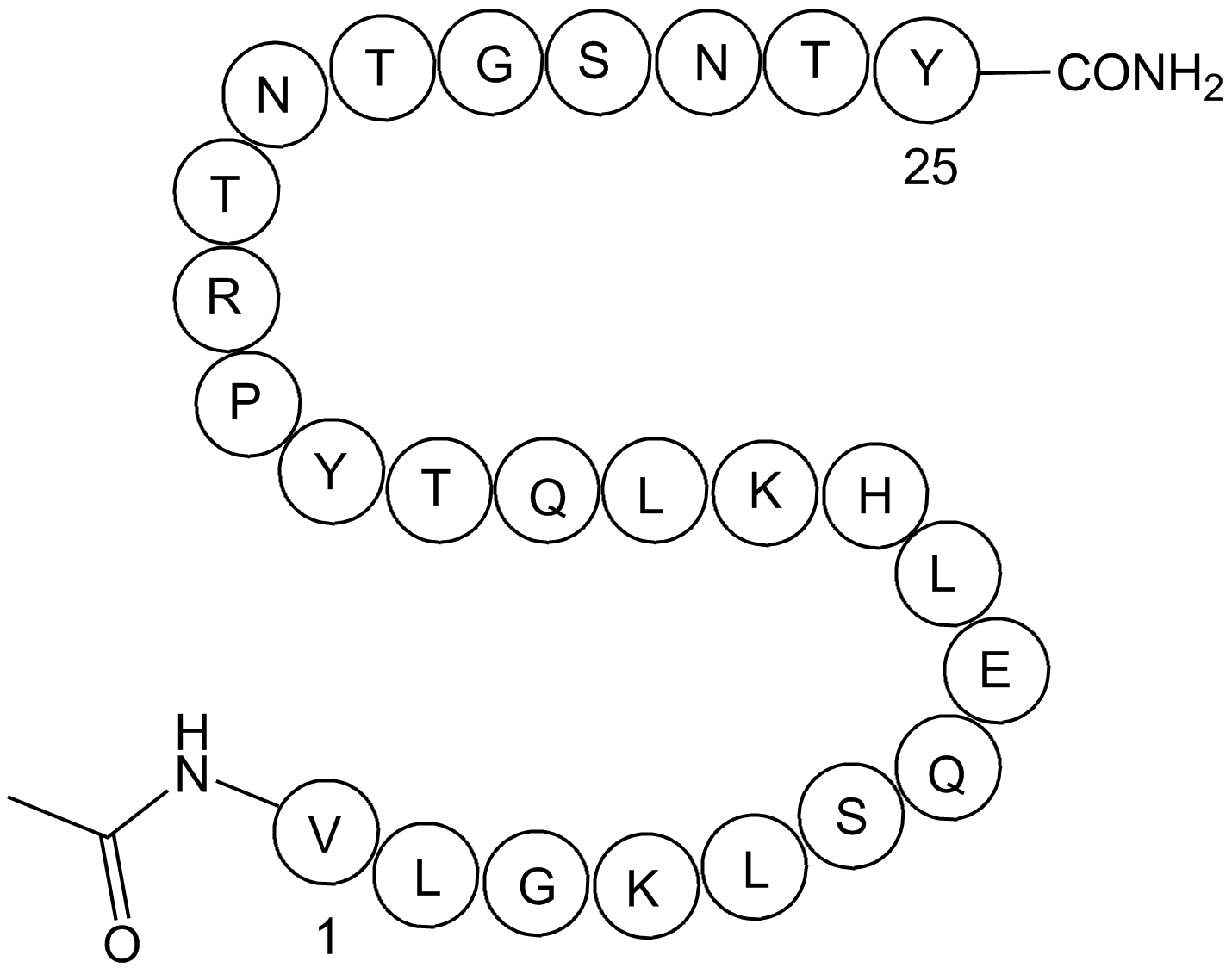
-
GA20481
Ac-Arg-Gly-Lys(Ac)-AMC
Ac-RGK(Ac)-AMC, fluorogenic substrate for assaying histone deacetylase (HDAC) activity in a two-step enzymatic reaction. The assay consists of the initial lysine deacetylation by HDAC followed by the release of the fluorescent group by trypsin.

-
GC40554
Ac-Calpastatin (184-210)
The calpains are a family of calcium-dependent cysteine proteases, with calpain I (μ-calpain) requiring micromolar calcium and calpain II (m-calpain) requiring millimolar calcium.

-
GC17602
Ac-DEVD-AFC
fluorogenic substrate for activated caspase-3
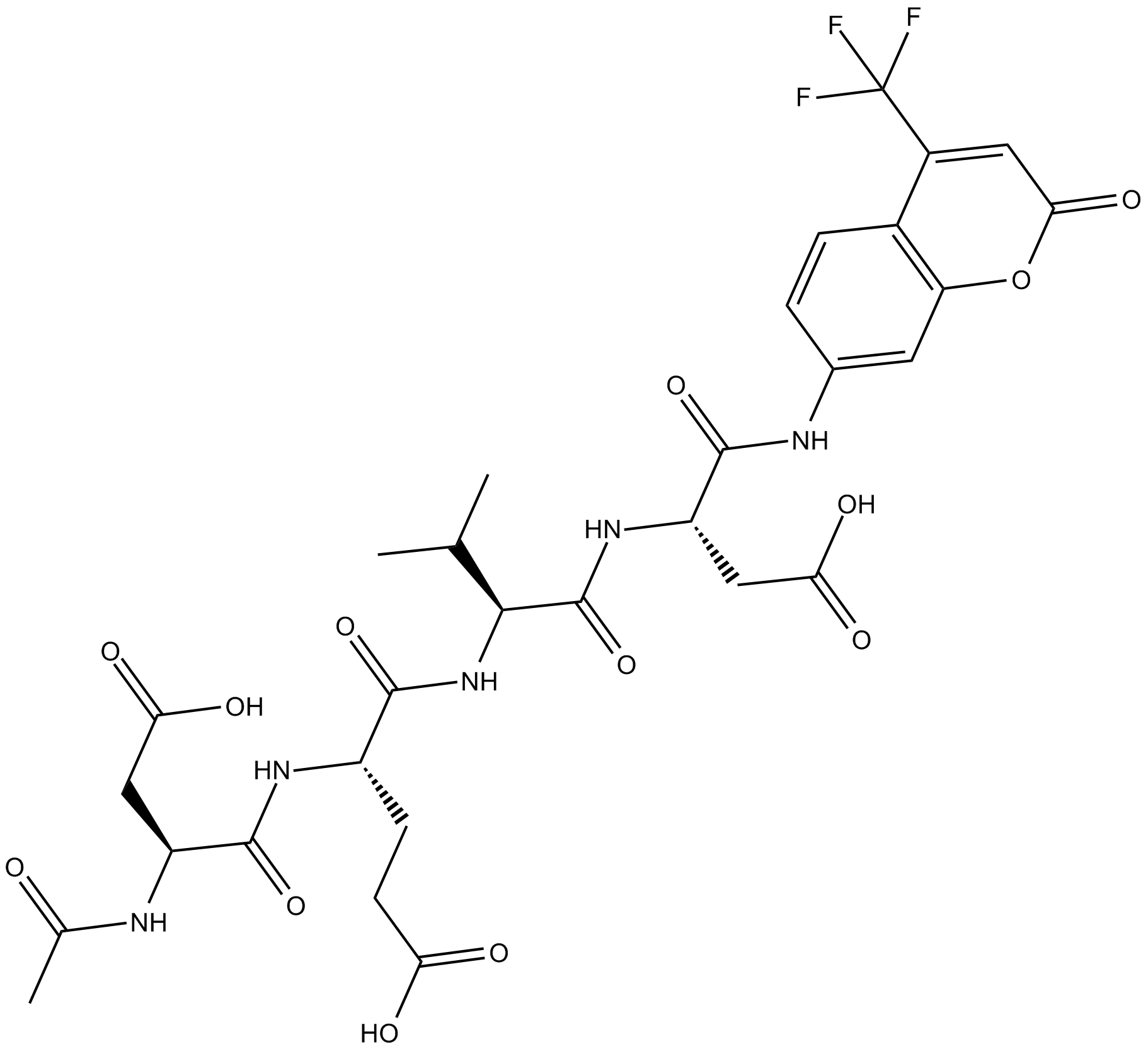
-
GC42686
Ac-DEVD-AMC
Ac-DEVD-AMC is a fluorogenic substrate that can be cleaved specifically by caspase-3.

-
GC48470
Ac-DEVD-CHO (trifluoroacetate salt)
A dual caspase3/caspase7 inhibitor

-
GC49704
Ac-FLTD-CMK (trifluoroacetate salt)
An inhibitor of caspase-1, -4, -5, and -11

-
GA20572
Ac-Gly-Lys-OMe
Substrate for the determination of urokinase activity. It is also cleaved by thrombin, plasmin and trypsin as well as complement component C3/C5 convertases.
Also known as GK-peptide, used in studies on protein glycation and formation of Maillard products.

-
GC10258
Ac-IEPD-AFC
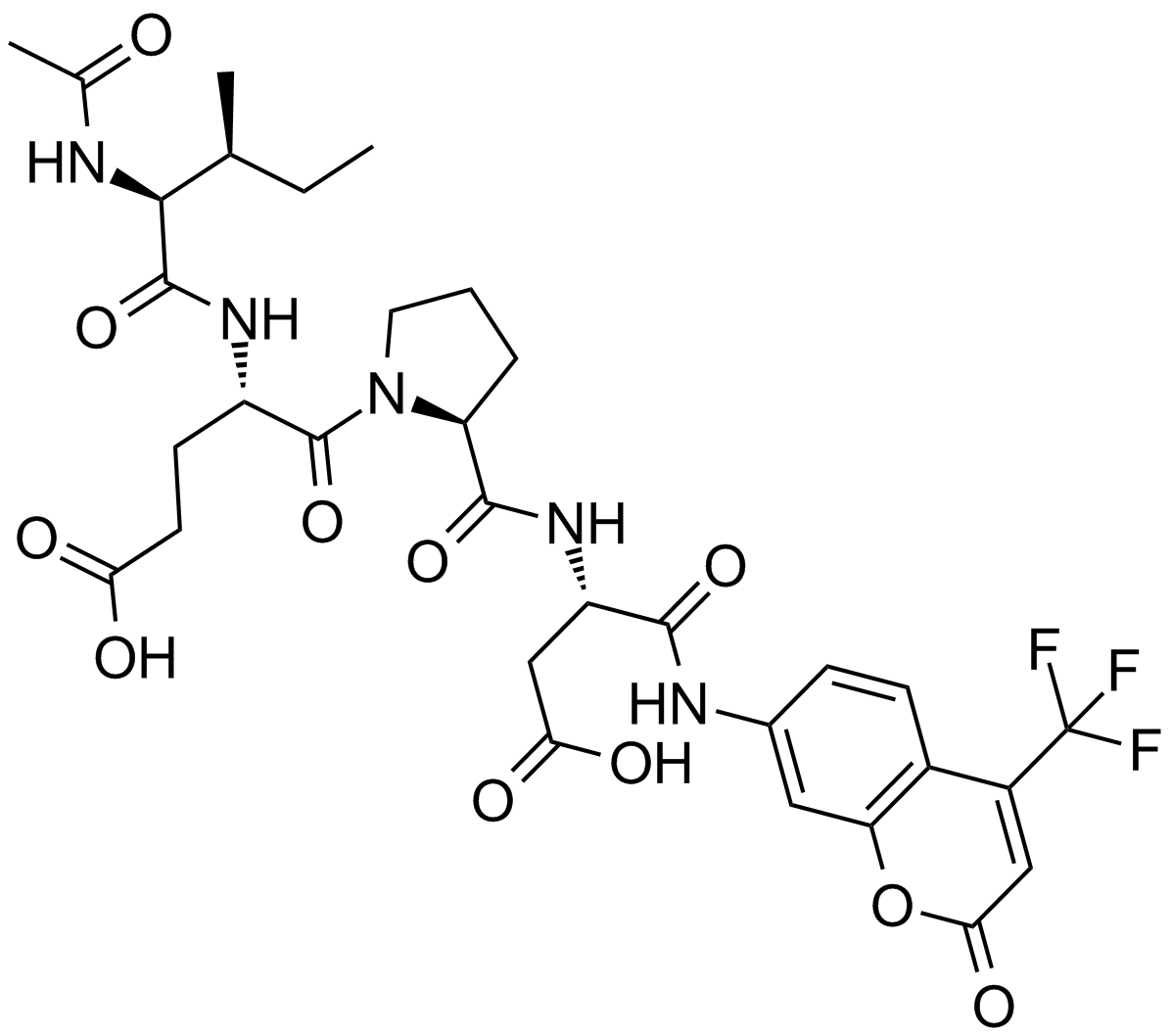
-
GC15479
Ac-IETD-pNA
Ac-IETD-pNA is a substrate for caspase-8.
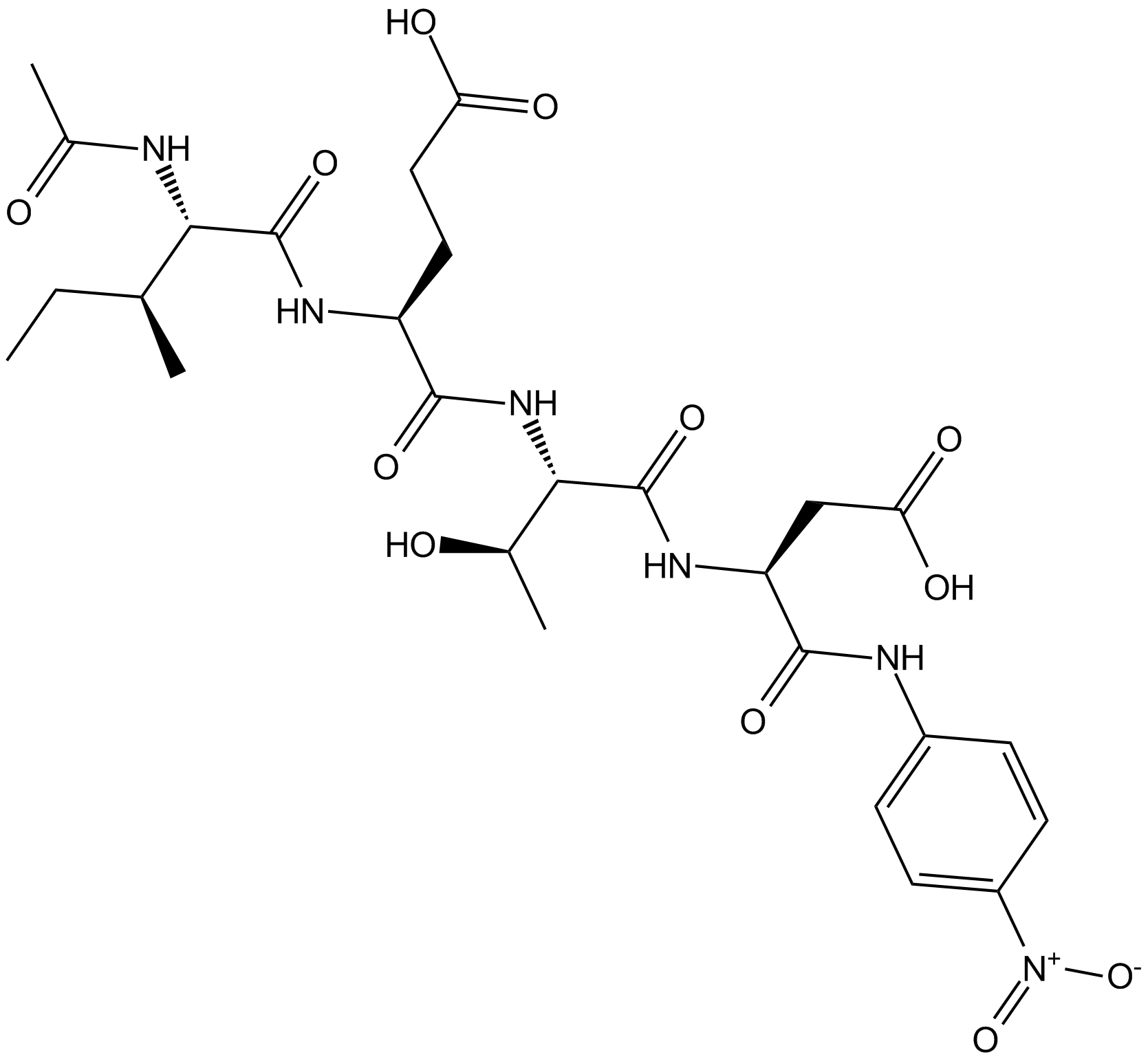
-
GC35239
Ac-Leu-Arg-AMC
Ac-Leu-Arg-AMC is a fluorogenic peptide substrate.
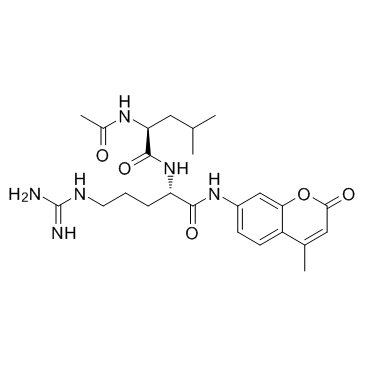
-
GC42710
Ac-PAL-AMC
Ac-PAL-AMC is a fluorogenic substrate for the β1i/LMP2 subunit of the 20S immunoproteasome.

-
GC10014
Ac-RYYRIK-NH2
High affinity ligand for the NOP site
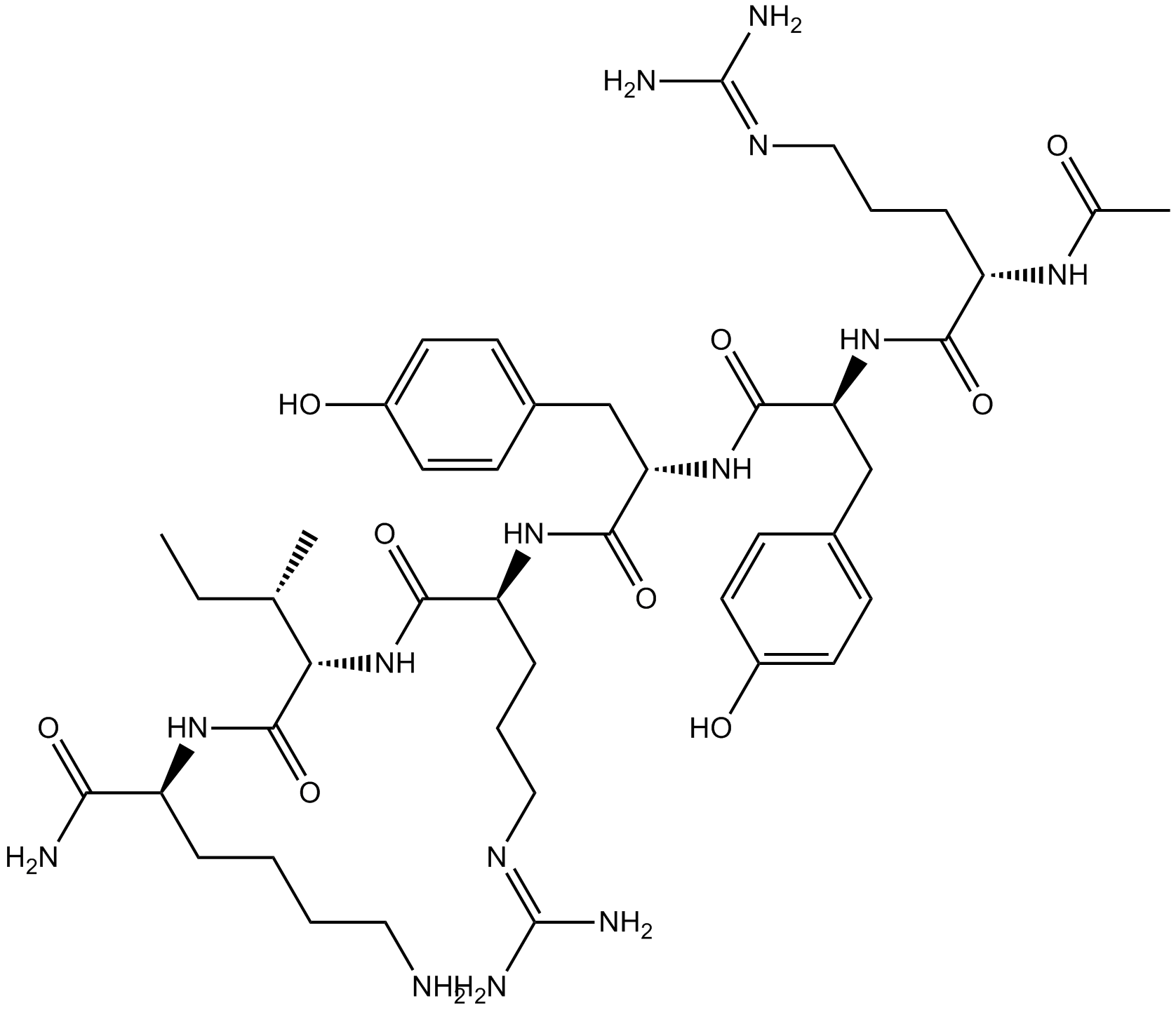
-
GC15444
Ac-RYYRWK-NH2
selective partial agonist peptide for the NOP receptor
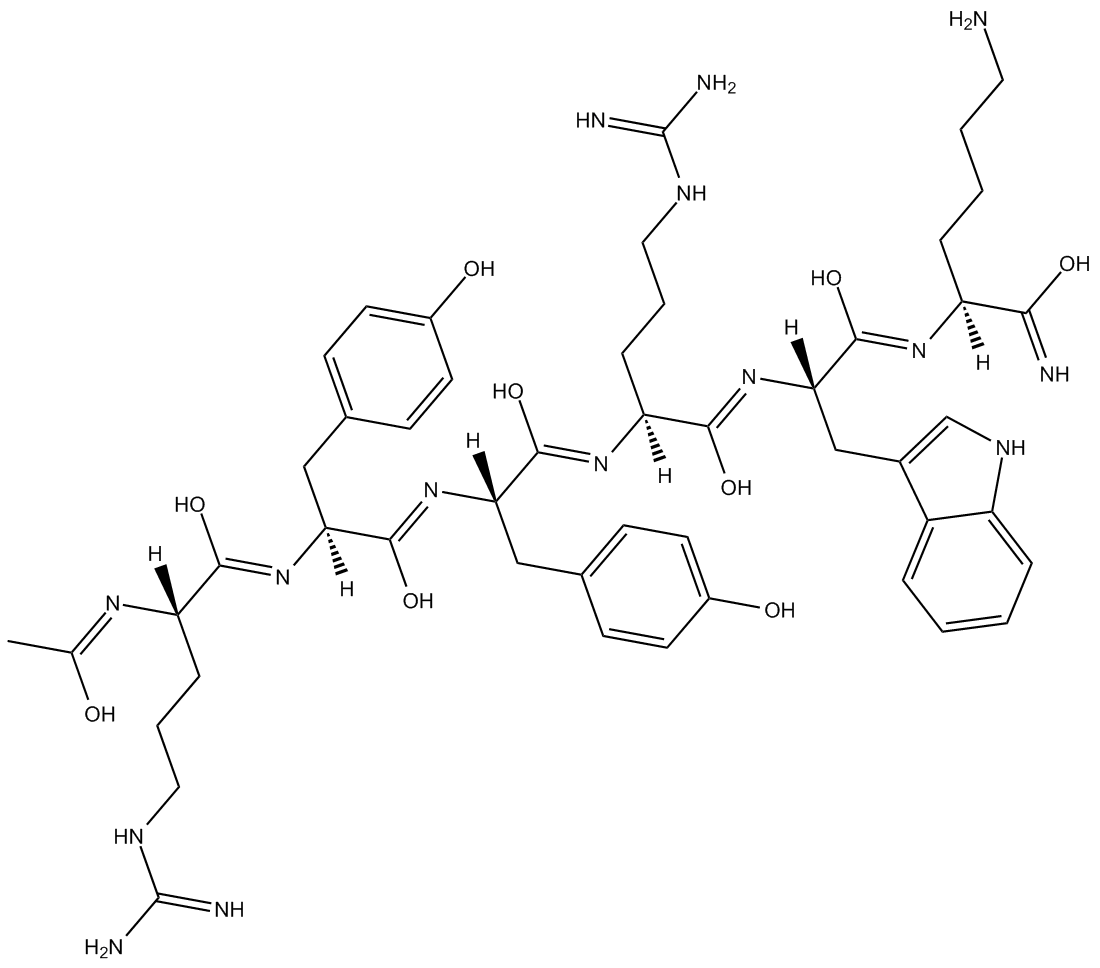
-
GA24064
Ac-Ser-Asp-Lys-Pro-OH
The bioactive tetrapeptide goralatide which corresponds to the N-terminus of Thymosin β?, is a physiological regulator of hematopoiesis and inhibits the entry into the S-phase of murine and human hematopoietic stem cells.

-
GA24065
Ac-Tyr-OEt
Substrate for chymotrypsin and carboxypeptidase Y.

-
GC18021
Ac-YVAD-CHO
Selective inhibitor of interleukin-1β converting enzyme (ICE; Caspase-1)
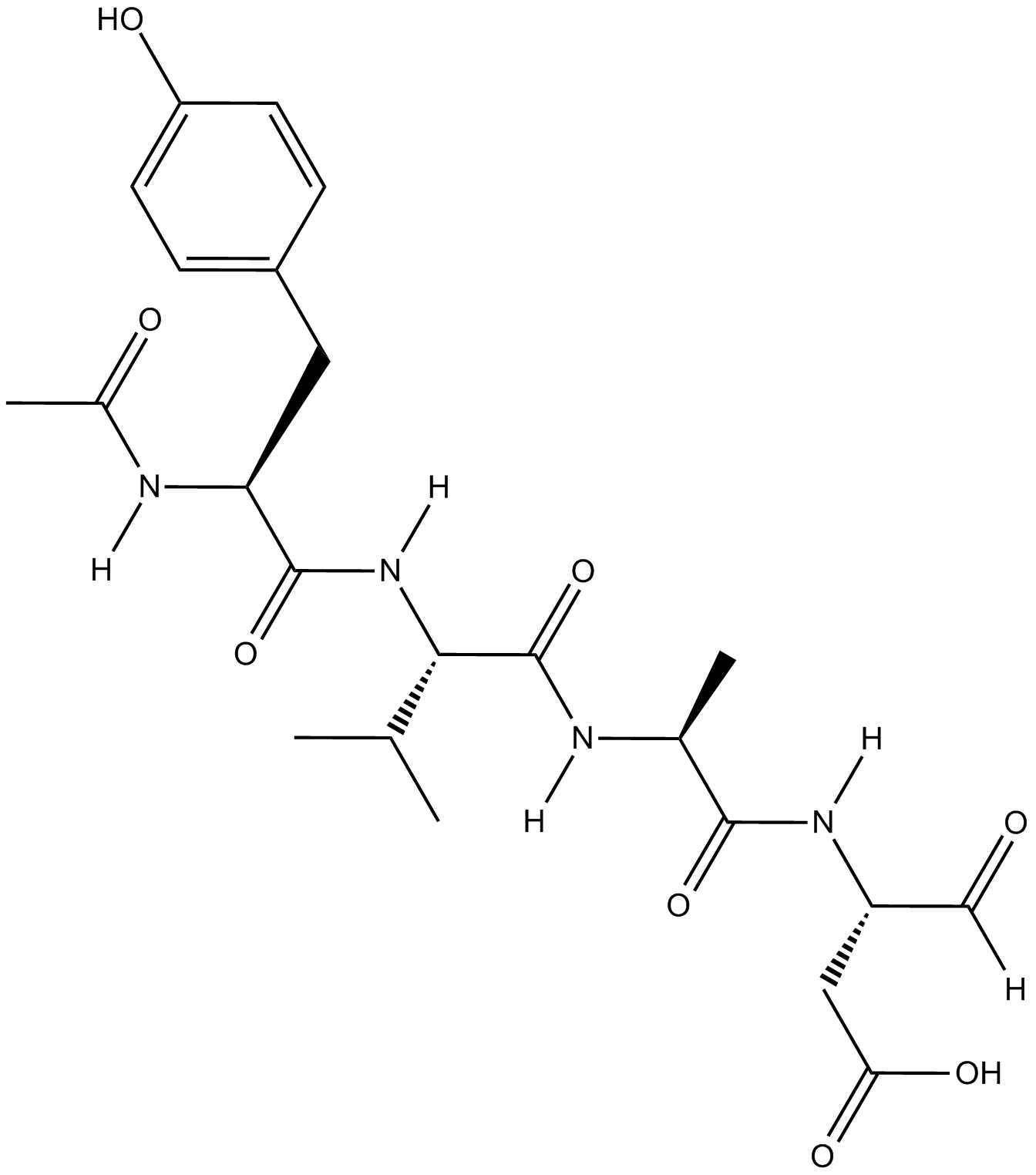
-
GC42721
Ac-YVAD-CMK
Ac-YVAD-CMK is a selective irreversible inhibitor of caspase-1 (Ki=0.8nM), which can prevent the proinflammatory cytokine IL-1β activation. Ac-YVAD-CMK can reduce the inflammatory response and induce a long-lasting neuroprotective effect.

-
GC68607
Ac-{Gly(N-me)}-Sar-Sar-Sar-Sar-Sar-Sar-Sar-Sar-Sar
Ac-{Gly(N-me)}-Sar-Sar-Sar-Sar-Sar-Sar-Sar-Sar-Sar is a decapeptide. Ac-{Gly(N-me)}-Sar-Sar-Sar-Sar-Sarsarsarsars is useful for preparing antibody-active molecule conjugates.
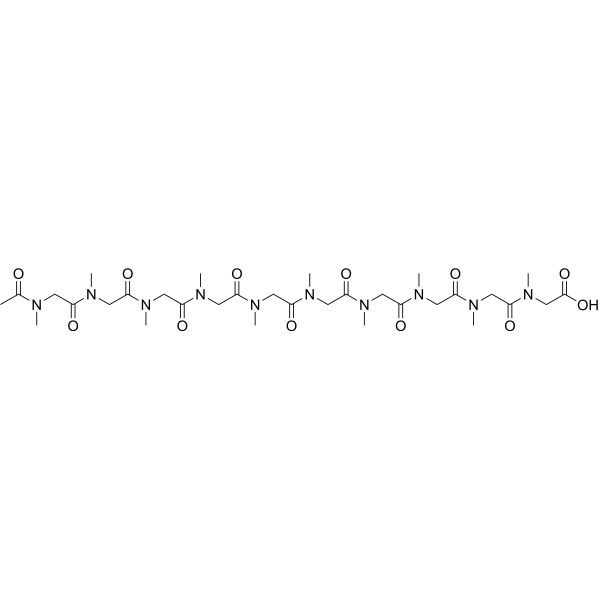
-
GC10244
Ac2-12
inhibitor of leukocyte extravasation
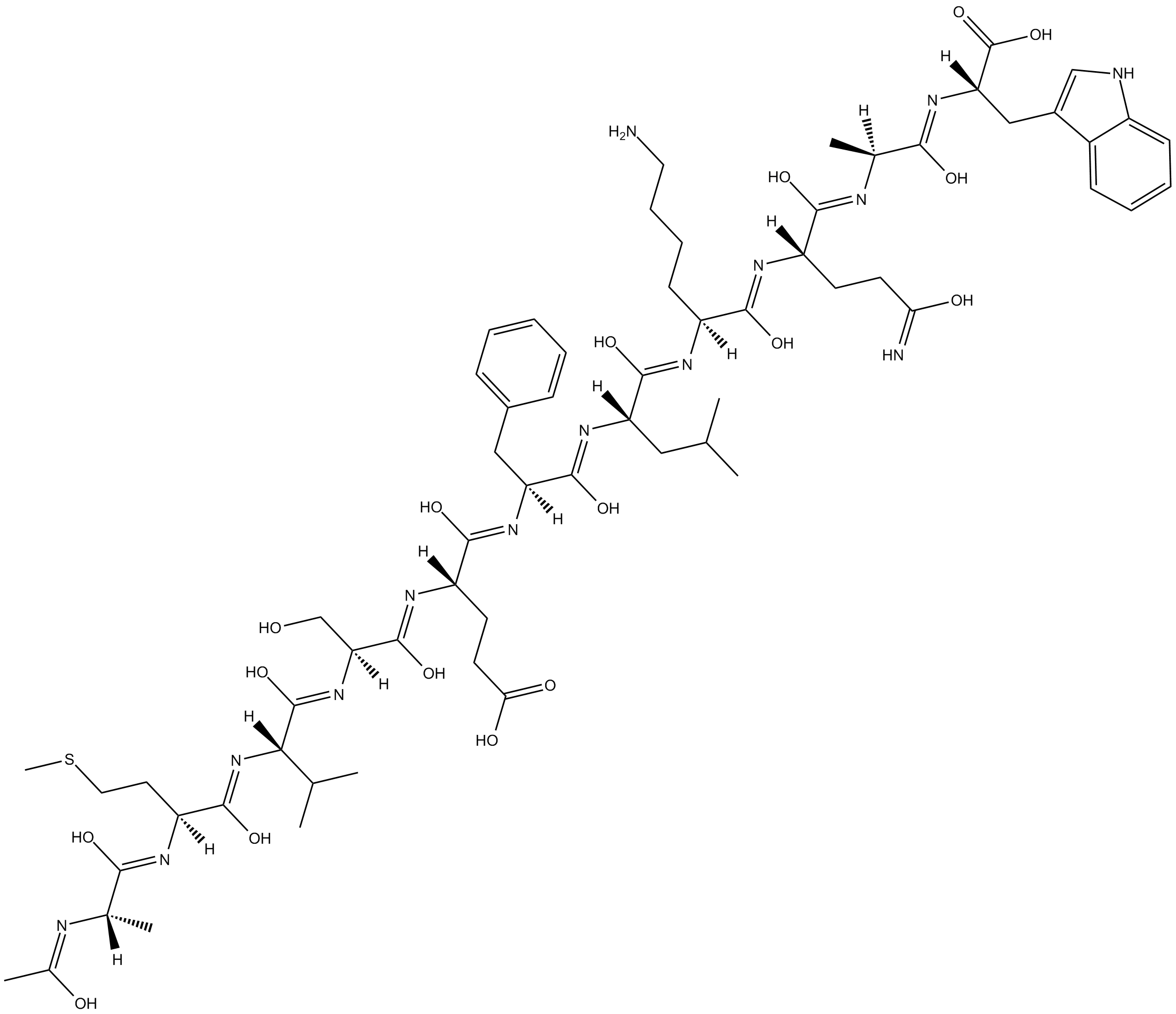
-
GC15598
Ac2-26
inhibitor of leukocyte extravasation
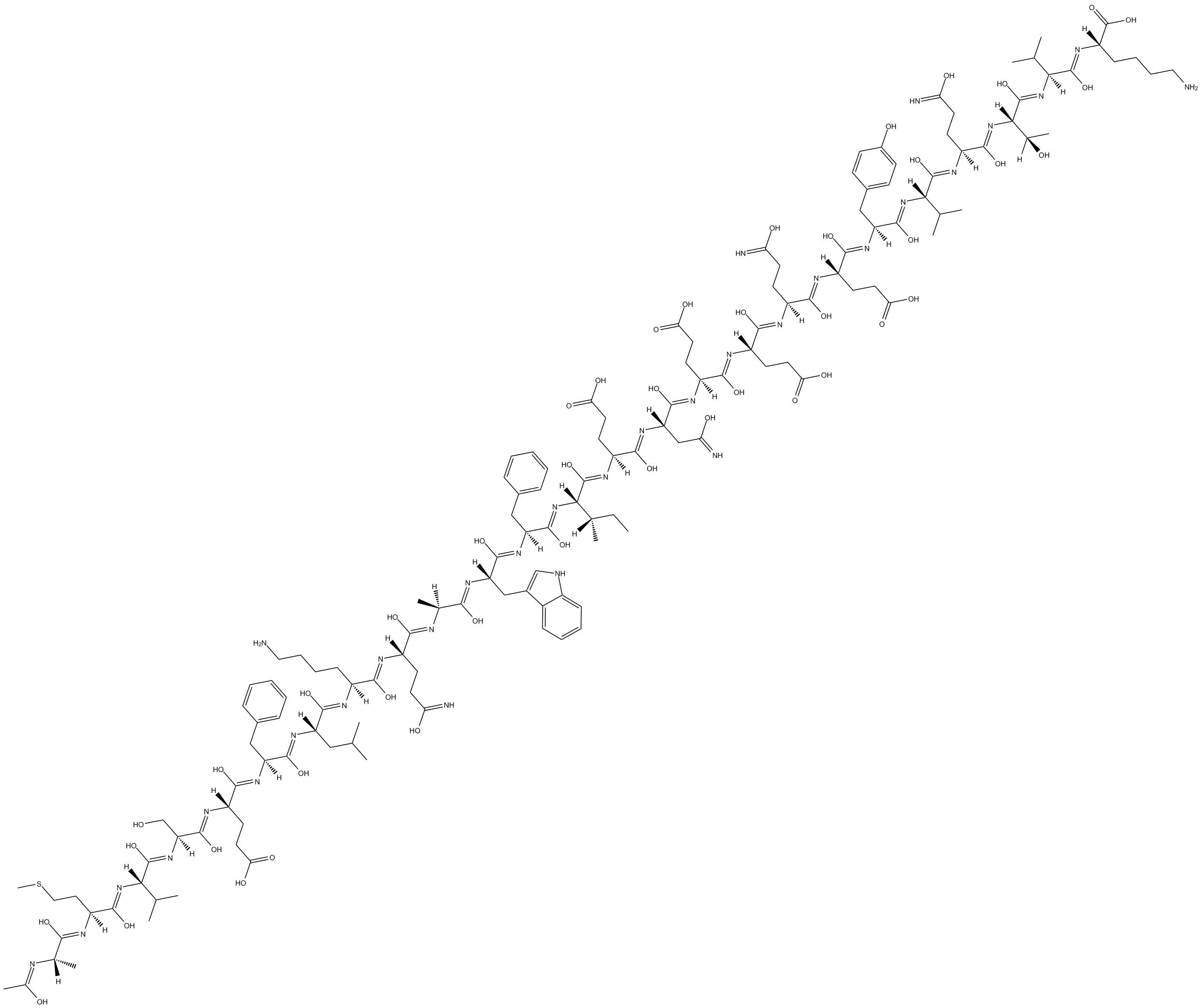
-
GC49263
Ac2-26 (human) (ammonium salt)
An annexin A1-mimetic peptide

-
GC35224
Ac2-26 TFA
Ac2-26 TFA, an active N-terminal peptide of annexin A1 (AnxA1), attenuates ischemia-reperfusion-induced acute lung injury.
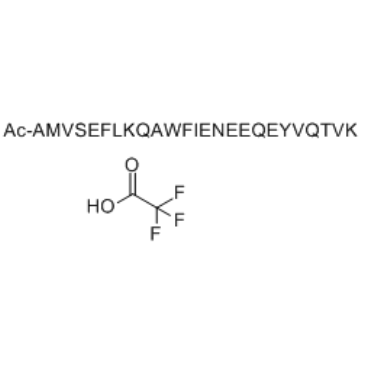
-
GC15522
Ac9-25
formyl peptide receptor 1 (FPR1) ligand
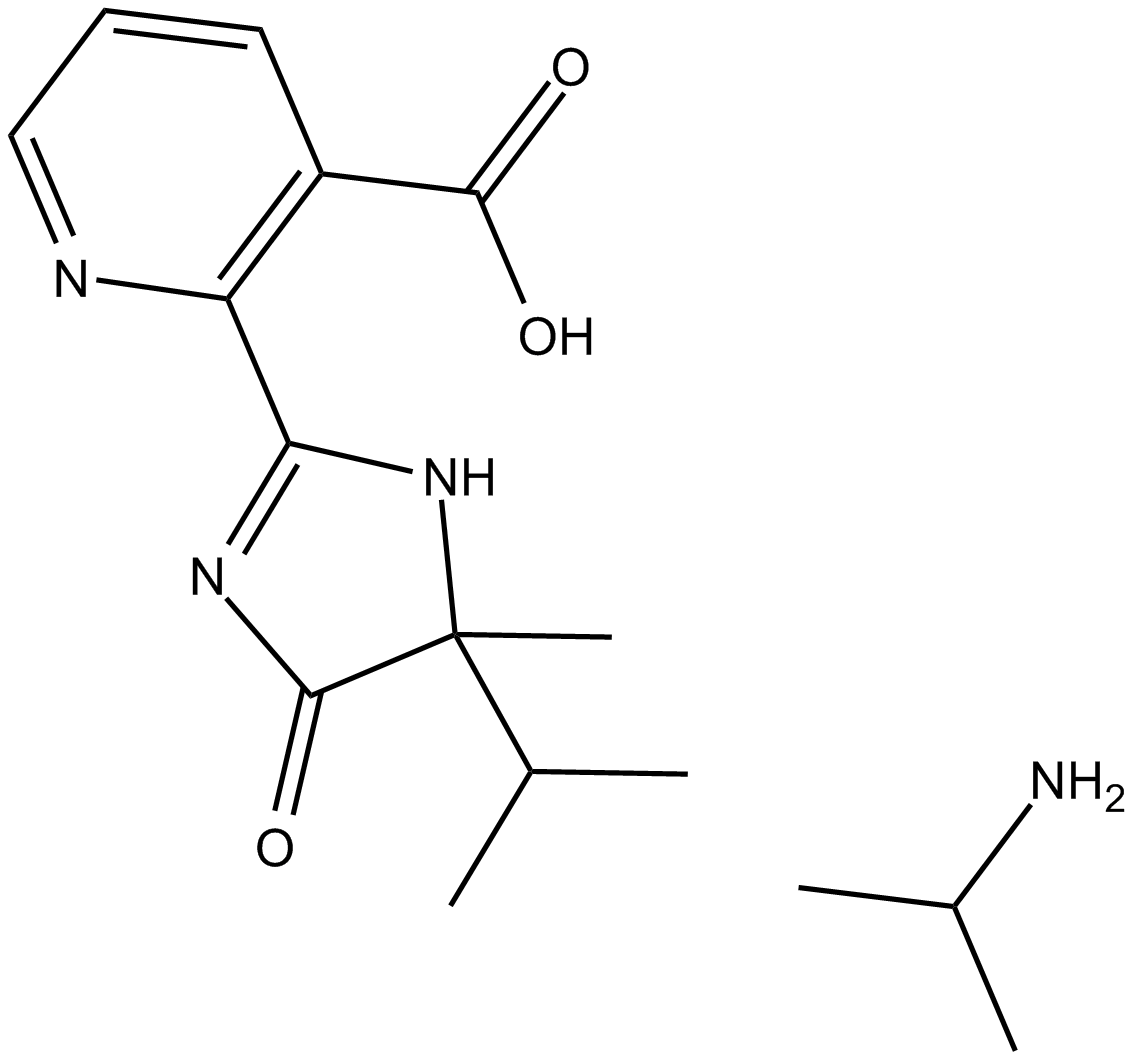
-
GC42703
Acetyl β-Endorphin (1-26) (human) (trifluoroacetate salt)
Acetyl β-endorphin (1-26) is a neuropeptide found in rat hippocampus, brain stem, and pituitary.

-
GC42704
Acetyl β-Endorphin (human) (trifluoroacetate salt)
Acetyl β-endorphin is an acetylated derivative of β-endorphin that binds to opioid receptors in rat caudal dorsomedial medulla (Ki = 490 nM) and mouse brain membrane preparations (IC50 = 109 nM).

-
GC49711
Acetyl Dipeptide 1 cetyl ester (trifluoroacetate salt)
A cosmeceutical peptide
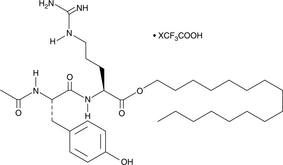
-
GC46786
Acetyl Hexapeptide-3 (acetate)
A synthetic hexapeptide

-
GC45641
Acetyl Octapeptide-3
A cosmeceutical peptide

-
GC42700
Acetyl Pentapeptide-1
Acetyl pentapeptide-1 is a pentapeptide that decreases IL-8 secretion in human keratinocytes when used in combination with acetyl hexapeptide-36 and acetyl hexapeptide-38.

-
GC49712
Acetyl Tetrapeptide-15 (acetate)
A peptide derivative of endomorphin 2

-
GC42701
Acetyl Tetrapeptide-3
Acetyl tetrapeptide-3 is a biomimetic peptide.

-
GC42702
Acetyl Tetrapeptide-5
Acetyl tetrapeptide-5 is a cosmeceutical matricin peptide.

-
GC49699
Acetyl Tetrapeptide-9 (acetate)
A synthetic signal peptide

-
GA20525
Acetyl-(N-Me-Leu¹⁷,N-Me-Phe¹⁹)-Amyloid β-Protein (16-20) amide
Membrane-permeable inhibitor of Aβ (1-40) fibrillogenesis.

-
GA24061
Acetyl-(Phe¹)-Octreotide trifluoroacetate salt
The peptide is an impurity of octreotide.

-
GA20526
Acetyl-(Pro¹⁸,Asp²¹)-Amyloid β-Protein (17-21) amide
The pentapeptide Ac-LPFFD-NH? (iAβ5p) is an analog of product H-4876 with small chemical modifications which enhance its stability against proteolytic degradation. iAβ5p acts as a β-sheet breaker peptide and crosses the blood-brain barrier at a higher rate than most proteins and peptides known to be selectively taken up by the brain so that it is assumed that the peptide is being specifically transported to the brain. A significant increase in neuronal survival and decrease in brain inflammation associated with the reduction of amyloid plaques in two different transgenic Alzheimer`s disease (AD) models is additionally reported for iAβ5p.

-
GA20535
Acetyl-Amyloid β-Protein (1-6) amide
Experiments using sub-peptides of Aβ42 revealed that the epitope identified by the antibody A8, as described by Ying and coworkers, lies within the 1-6 region of Aβ. The antibody displays high affinity for soluble Aβ42 oligomers in the molecular weight range of 16.5-25 kDa, and detected target antigen in brain sections from senescence-accelerated SAMP 8 mice. Amidated or acetylated and amidated forms of the sequence were used for example for quantitative structure retention relationships (QSRR) experiments. The latter could allow prediction of reversed-phase high-performance liquid chromatography (HPLC) retention of peptides, as reported by Kaliszan and coworkers.

-
GA20534
Acetyl-Amyloid β-Protein (15-20) amide
Incubation of Ac-QKLVFF-NH? with the amyloid β-protein (1-40) inhibited polymerization of the amyloid β-protein (1-40) into amyloid fibrils. The peptide is thought to block the polymerization sites.

-
GA20533
Acetyl-Amyloid β/A4 Protein Precursor₇₇₀ (96-110) (cyclized)
This cyclized peptide which is homologous to the heparin-binding domain of APP, binds strongly to heparin and inhibits binding of ¹²?I-labeled APP to heparin (IC??= 10??M). The peptide blocks the heparan sulfate proteoglycan-dependent stimulatory effect of APP on neurite outgrowth.

-
GC12152
Acetyl-Calpastatin (184-210) (human)
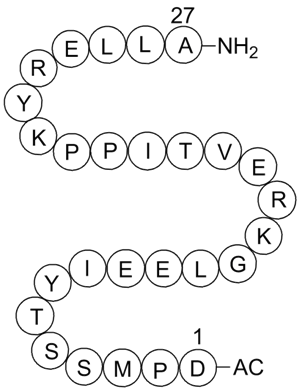
-
GA20540
Acetyl-Hirudin (54-65) (sulfated)
Acetyl-Hirudin (54-65) (sulfated) binds directly to thrombin-rHCII(L444R) and disrupts interactions between the N-terminal acidic domain of rHCII and anion-binding exosite I of thrombin that serves to stabilize the complex.

-
GA24062
Acetyl-Octreotide
Potential impurity of octreotide.

-
GA20545
Acetyl-Pepstatin
Acetyl-pepstatin is reported to be an effective inhibitor of HIV-1 proteinase (Ki = 20 nM at pH 4.7) and of HIV-2 proteinase (Ki = 5 nM at pH 4.7). Ac-Val-Val-Sta-Ala-Sta also inhibits the P. falciparum aspartyl protease plasmepsin II, IC?? 0.6 nM.

-
GA24063
Acetyl-PHF6 amide
The sequence VQIVYK within the third repeat of tau is essential for fibrillization.

-
GC34387
Acetyl-PHF6 amide TFA
Acetyl-PHF6 amide TFA (AcPHF6 TFA) is a tau derived hexapeptide.

-
GC35243
ACTH (1-14) TFA
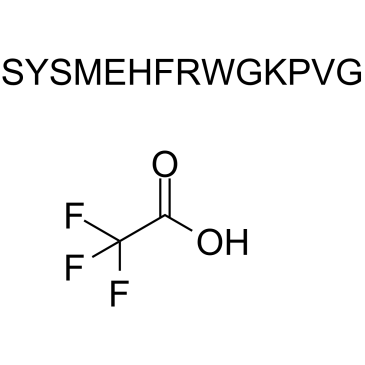
-
GC35244
ACTH (1-17) TFA
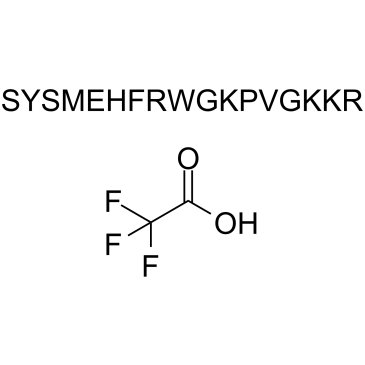
-
GC12239
ACTH (1-39)
ACTH (1-39) is a melanocortin receptor agonist.
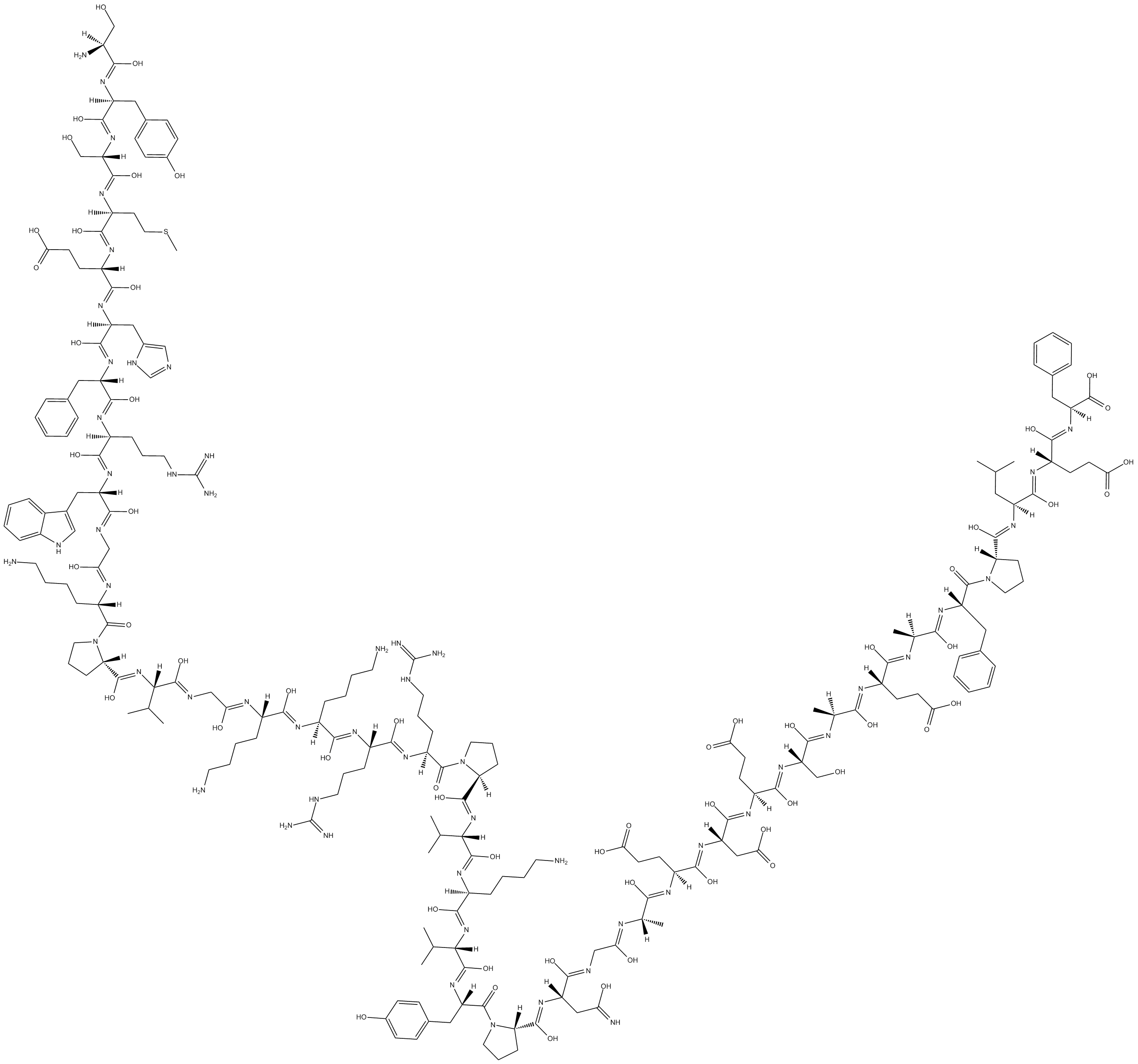
-
GC65350
ACTH (34-39)
ACTH (34-39) is an adrenocorticotropic hormone fragment.
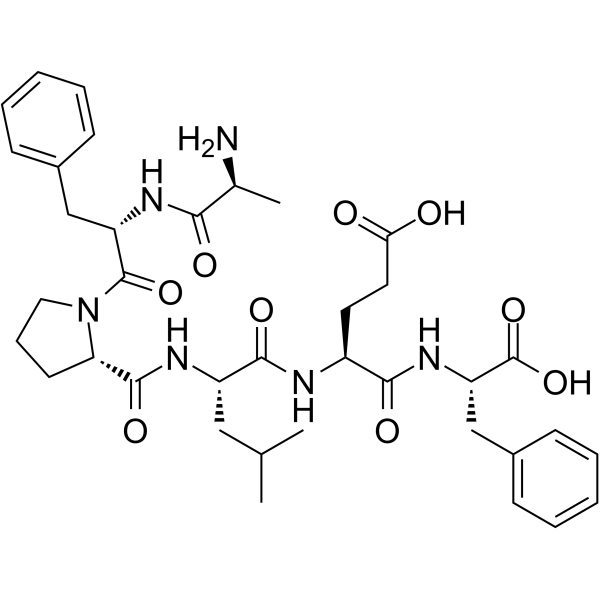
-
GC31925
ACTH 1-13 (Adrenocorticotropic Hormone (1-13))
ACTH 1-13 (Adrenocorticotropic Hormone (1-13)) is a 13-aa peptide, with cytoprotective effects in the model of ethanol induced gastric lesions in rats.
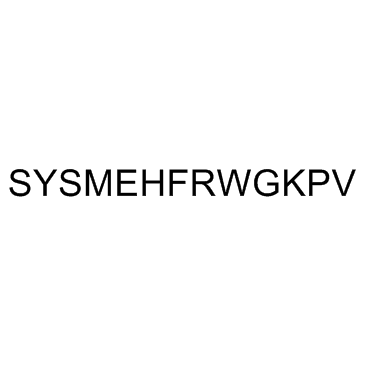
-
GC30547
ACTH 1-14 (Adrenocorticotropic Hormone Fragment 1-14)
ACTH 1-14 (Adrenocorticotropic Hormone Fragment 1-14) is a fragment of adrenocorticotrophin, which regulates cortisol and androgen production.
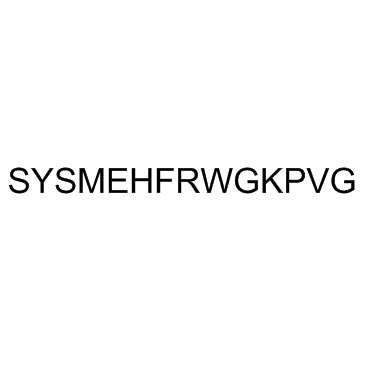
-
GC31109
ACTH 1-17 (α1-17-ACTH)
ACTH 1-17 (α1-17-ACTH), an adrenocorticotropin analogue, is a potent human melanocortin 1 (MC1) receptor agonist with a Ki of 0.21 nM.
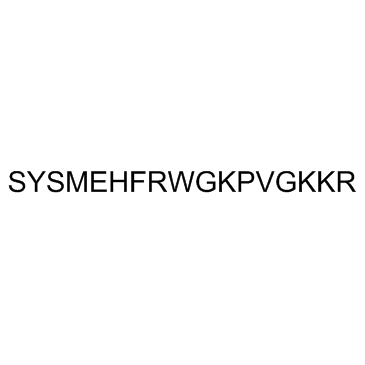
-
GC31954
ACTH 11-24 (Adrenocorticotropic Hormone (11-24))
ACTH 11-24 (Adrenocorticotropic Hormone (11-24)) is an adrenocorticotropic hormone (ACTH) receptor antagonist.
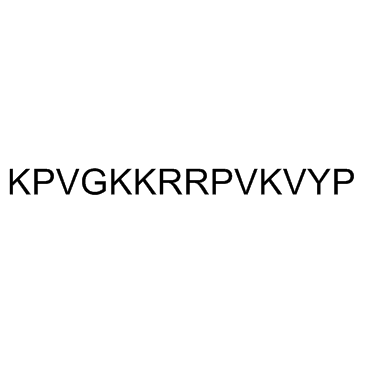
-
GC31507
ACTH 22-39 (Adrenocorticotropic Hormone (22-39))
ACTH 22-39 (Adrenocorticotropic Hormone (22-39)) is an adrenocorticotropic hormone (ACTH) fragment.

-
GC31530
ACTH 4-11 (Adrenocorticotropic Hormone (4-11), human)
ACTH 4-11 (Adrenocorticotropic Hormone (4-11), human), an adrenocorticotropin hormone fragment, possesses a weak α-melanocyte stimulating hormone (α-MSH) potency only at high doses (100 and 1000 nM).
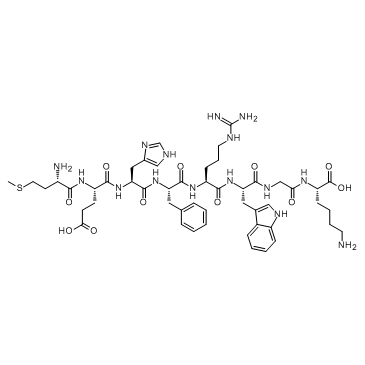
-
GC35245
Activated Protein C (390-404), human
Activated Protein C (390-404), human is a peptide of the activated protein C (a vitamin K-dependent serine protease), potently inhibits APC anticoagulant activity.
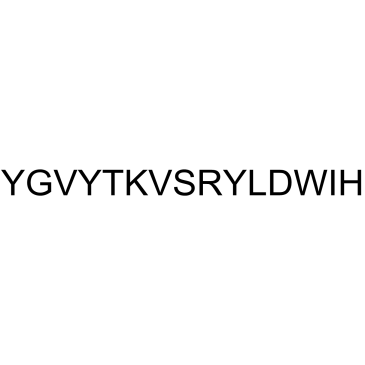
-
GC35246
Activated Protein C (390-404), human TFA
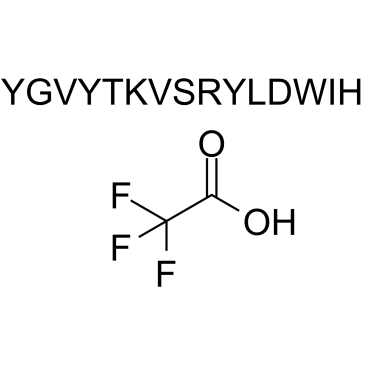
-
GC31528
Adipokinetic Hormone (AKH) (24-32), locust
Adipokinetic Hormone (AKH) (24-32), locust, isolated from locust corpora cardiaca, is a neurohormone that regulates lipid utilisation during flight.
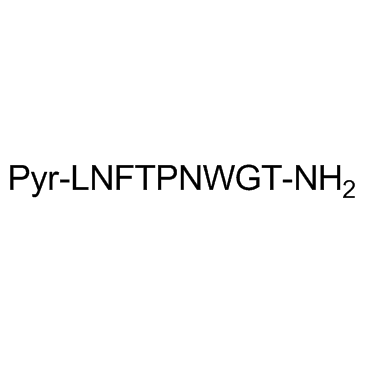
-
GC33774
Adrenocorticotropic Hormone (ACTH) (1-10), human
Adrenocorticotropic Hormone (ACTH) (1-10), human, an adrenocorticotropin hormone fragment, possesses a weak α-melanocyte stimulating hormone (α-MSH) potency only at high doses (100 and 1000 nM).
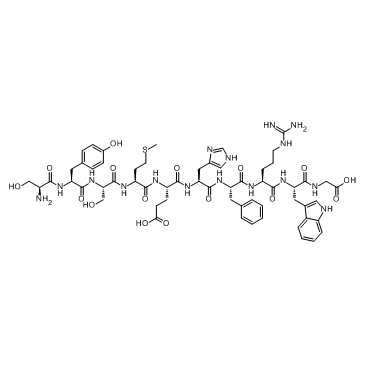
-
GC35253
Adrenocorticotropic Hormone (ACTH) (1-39), human(TFA)
Adrenocorticotropic Hormone (ACTH) (1-39), human(TFA) is a melanocortin receptor agonist.
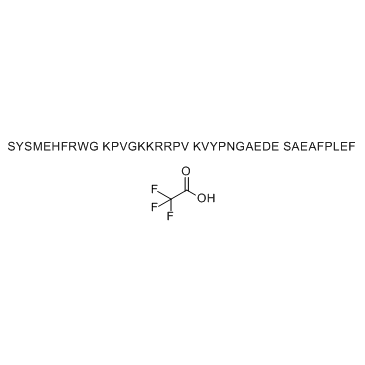
-
GC35254
Adrenocorticotropic Hormone (ACTH) (1-39), rat
Adrenocorticotropic Hormone (ACTH) (1-39), rat is a potent melanocortin 2 (MC2) receptor agonist.
